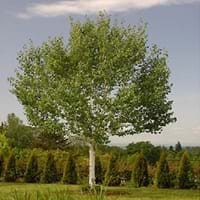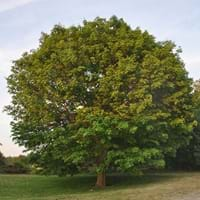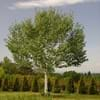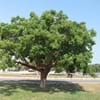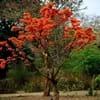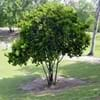Life Span
Perennial
Perennial
Origin
India, Nepal, China
Europe
Types
Not Available
Bigleaf Maple, Black Maple, Silver Maple
Habitat
Mountains
Forest edges, Open areas, Roadsides, wastelands
USDA Hardiness Zone
5-7
3-7
Sunset Zone
3a, 3b, 4, 5, 6, 7, 8, 9, 10, 11, 14, 15, 16, 17
A2, A3, 1a, 1b, 2a, 2b, 3a, 3b, 4, 5, 6, 7, 8, 9, 14, 15, 16, 17
Habit
Pyramidal
Oval or Rounded
Flower Color
Tan, Brown
Lemon yellow, Yellow green, Chartreuse
Flower Color Modifier
Bicolor
Bicolor
Fruit Color
Not Available
Green, Tan, Sandy Brown
Leaf Color in Spring
Yellow green
Green, Light Green
Leaf Color in Summer
Dark Green
Green, Dark Green
Leaf Color in Fall
Yellow
Yellow, Red, Lemon yellow, Yellow green
Leaf Color in Winter
Not Available
Not Available
Leaf Shape
Cordiform
Maple shaped
Plant Season
Spring, Summer, Fall, Winter
Spring, Summer, Fall
Sunlight
Full Sun, Partial Sun
Full Sun, Partial Sun, Partial shade
Type of Soil
Loam, Sand
Clay, Loam, Sand
The pH of Soil
Acidic, Neutral
Acidic, Neutral, Alkaline
Soil Drainage
Average
Average
Bloom Time
Early Spring
Early Spring, Spring
Tolerances
Not Available
Pollution, Drought, Soil Compaction
Where to Plant?
Ground
Ground
How to Plant?
Grafting, Stem Cutting
Stem Planting
Plant Maintenance
Medium
Medium
Watering Requirements
Requires watering in the growing season
Do Not over Water
In Summer
Average Water
Lots of watering
In Spring
Moderate
Moderate
In Winter
Average Water
Average Water
Soil pH
Acidic, Neutral
Acidic, Neutral, Alkaline
Soil Type
Loam, Sand
Clay, Loam, Sand
Soil Drainage Capacity
Average
Average
Sun Exposure
Full Sun, Partial Sun
Full Sun, Partial Sun, Partial shade
Pruning
Remove damaged leaves, Remove dead branches, Remove dead leaves
Remove damaged leaves, Remove dead leaves
Fertilizers
Fertilize in early spring, Fertilize in late fall, slow-release fertilizers
Doesn't require fertilization when grown in rich soil
Pests and Diseases
Honey fungus, Leaves with brown tip, Phytophthora Root Rot, Powdery mildew, Verticillium Wilt
Decline, Girdling Roots, Red blotch, Verticillium Wilt, Wetwood
Plant Tolerance
Dry Conditions, waterlogging, Wet Site
Drought
Flowers
Insignificant
Insignificant
Flower Petal Number
Not Available
Single
Foliage Texture
Medium
Coarse
Foliage Sheen
Matte
Matte
Attracts
Not Available
Not Available
Allergy
Not Available
Not Available
Aesthetic Uses
Not Used For Aesthetic Purpose
Showy Purposes
Beauty Benefits
Weightloss
Not Available
Environmental Uses
Air purification
Air purification
Medicinal Uses
anti-cancer, anti-inflammatory, antimicrobial, Antioxidants, Antiseptic, Carminative
Not Available
Part of Plant Used
Bark, Leaves
Whole plant, Wood
Other Uses
Used in construction, Wood is used in construction
Used as Ornamental plant, Used for its medicinal properties
Used As Indoor Plant
No
No
Used As Outdoor Plant
Yes
Yes
Garden Design
Feature Plant, Shade Trees
Feature Plant, Shade Trees, Street Trees
Botanical Name
BETULA utilis
ACER platanoides
Common Name
Himalayan Birch
Norway Maple
In Hindi
हिमालय सन्टी
नॉर्वे मेपल
In German
Himalaya-Birke
Spitzahorn
In French
bouleau de l'Himalaya
Norvège Maple
In Spanish
abedul del Himalaya
Noruega arce
In Greek
Himalayan σημύδας
Νεροπλάτανος
In Portuguese
bétula Himalaia
Noruega bordo
In Polish
Himalayan brzoza
klon zwyczajny
In Latin
Birch Himalayan
Acer platanoides
Phylum
Tracheophyta
Magnoliophyta
Class
Magnoliopsida
Magnoliopsida
Family
Betulaceae
Aceraceae
Clade
Angiosperms, Eudicots, Rosids
Angiosperms, Eudicots, Rosids
Tribe
Not Available
Not Available
Subfamily
Not Available
Not Available
Number of Species
Not Available
Not Available
Importance of Himalayan Birch and Norway Maple
Want to have the most appropriate plant for your garden? You might want to know the importance of Himalayan Birch and Norway Maple. Basically, these two plants vary in many aspects. Compare Himalayan Birch and Norway Maple as they differ in many characteristics such as their life, care, benefits, facts, etc. Every gardener must at least have the slightest clue about the plants he wants to plant in his garden. Compare their benefits, which differ in many ways like facts and uses. The medicinal use of Himalayan Birch is anti-cancer, anti-inflammatory, antimicrobial, Antioxidants, Antiseptic and Carminative whereas of Norway Maple is Not Available. Himalayan Birch has beauty benefits as follows: Weightloss while Norway Maple has beauty benefits as follows: Weightloss.
Compare Facts of Himalayan Birch vs Norway Maple
How to choose the best garden plant for your garden depending upon its facts? Here garden plant comparison will help you to solve this query. Compare the facts of Himalayan Birch vs Norway Maple and know which one to choose. As garden plants have benefits and other uses, allergy is also a major drawback of plants for some people. Allergic reactions of Himalayan Birch are Not Available whereas of Norway Maple have Not Available respectively. Having a fruit bearing plant in your garden can be a plus point of your garden. Himalayan Birch has no showy fruits and Norway Maple has no showy fruits. Also Himalayan Birch is not flowering and Norway Maple is not flowering . You can compare Himalayan Birch and Norway Maple facts and facts of other plants too.
